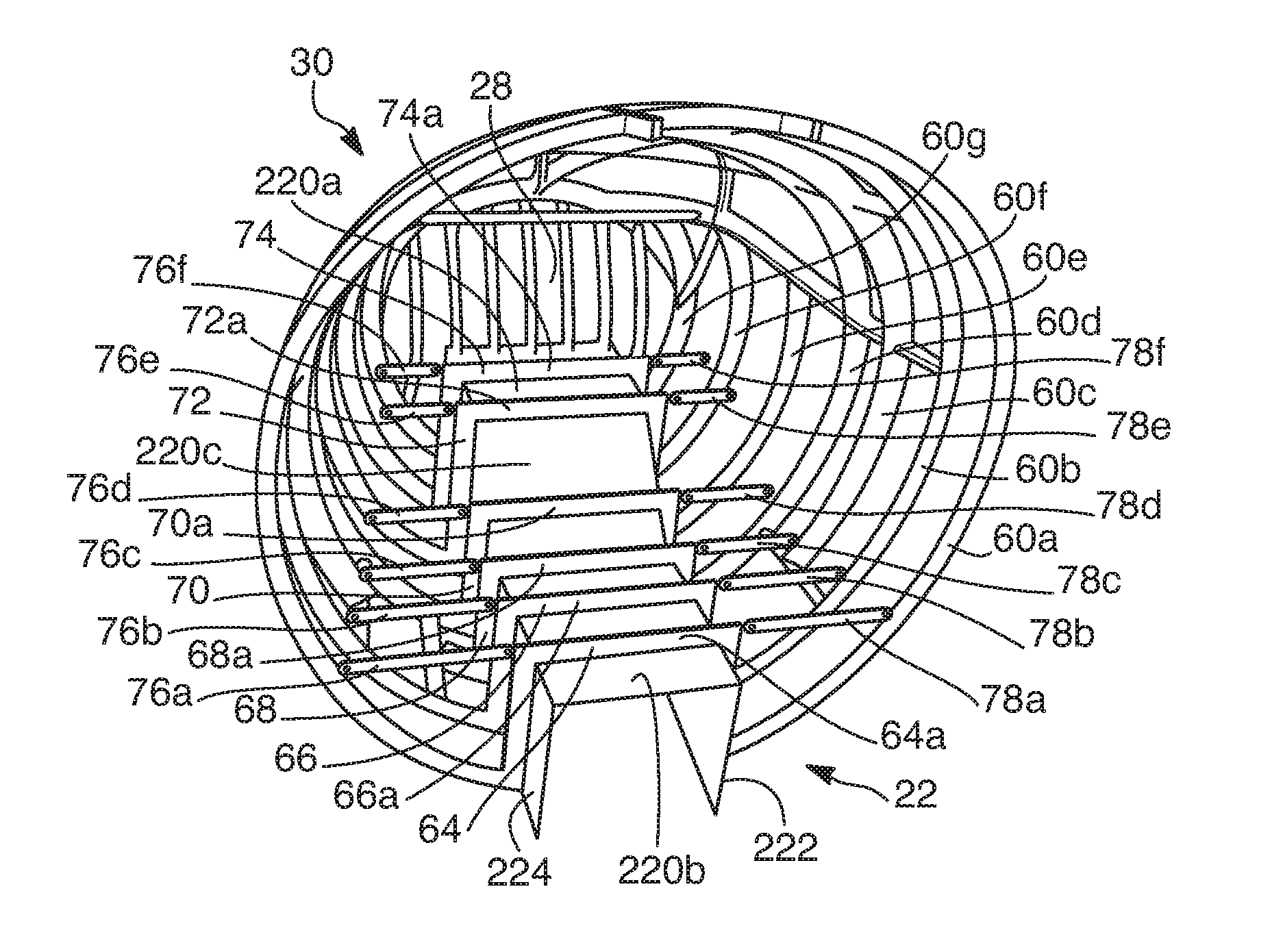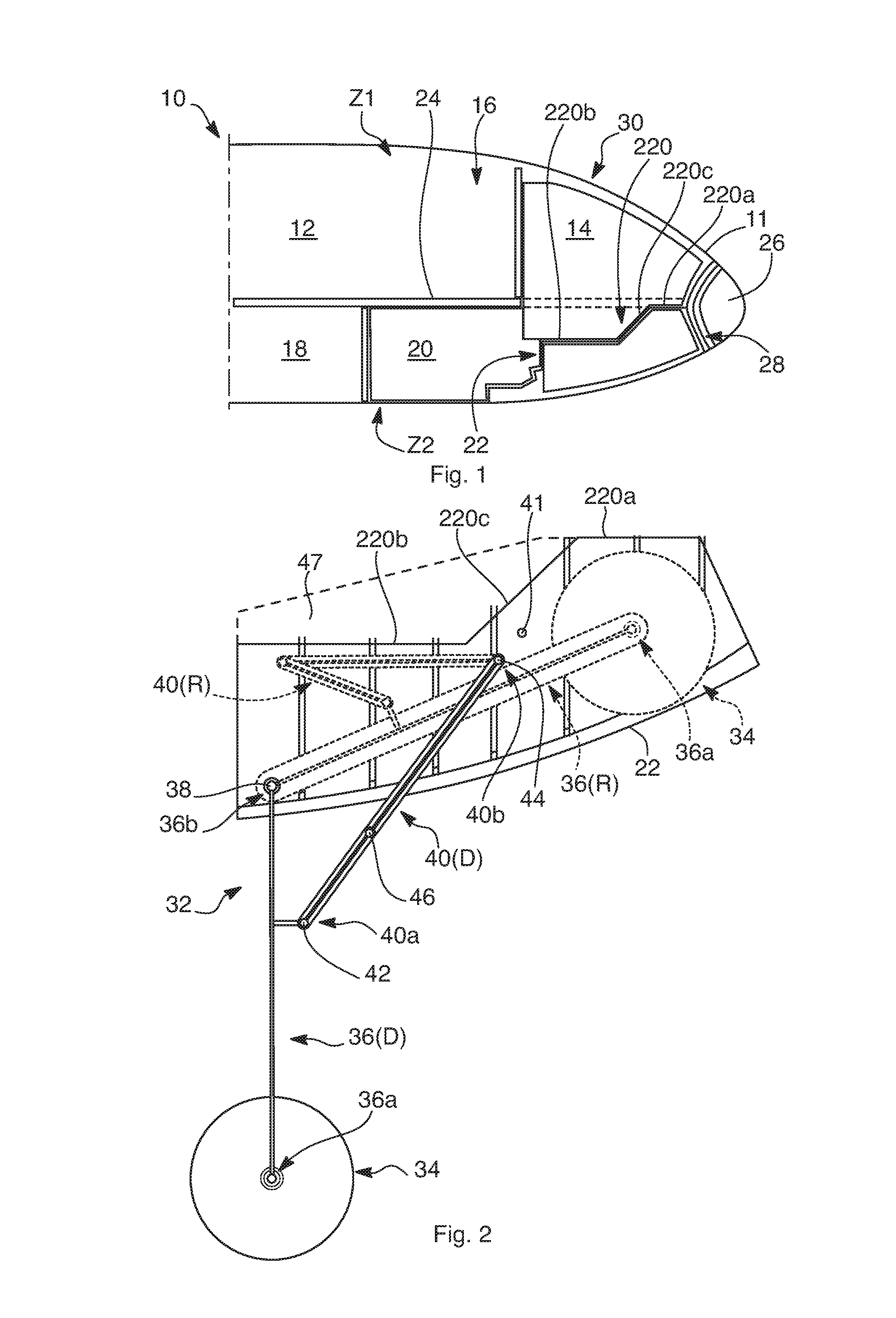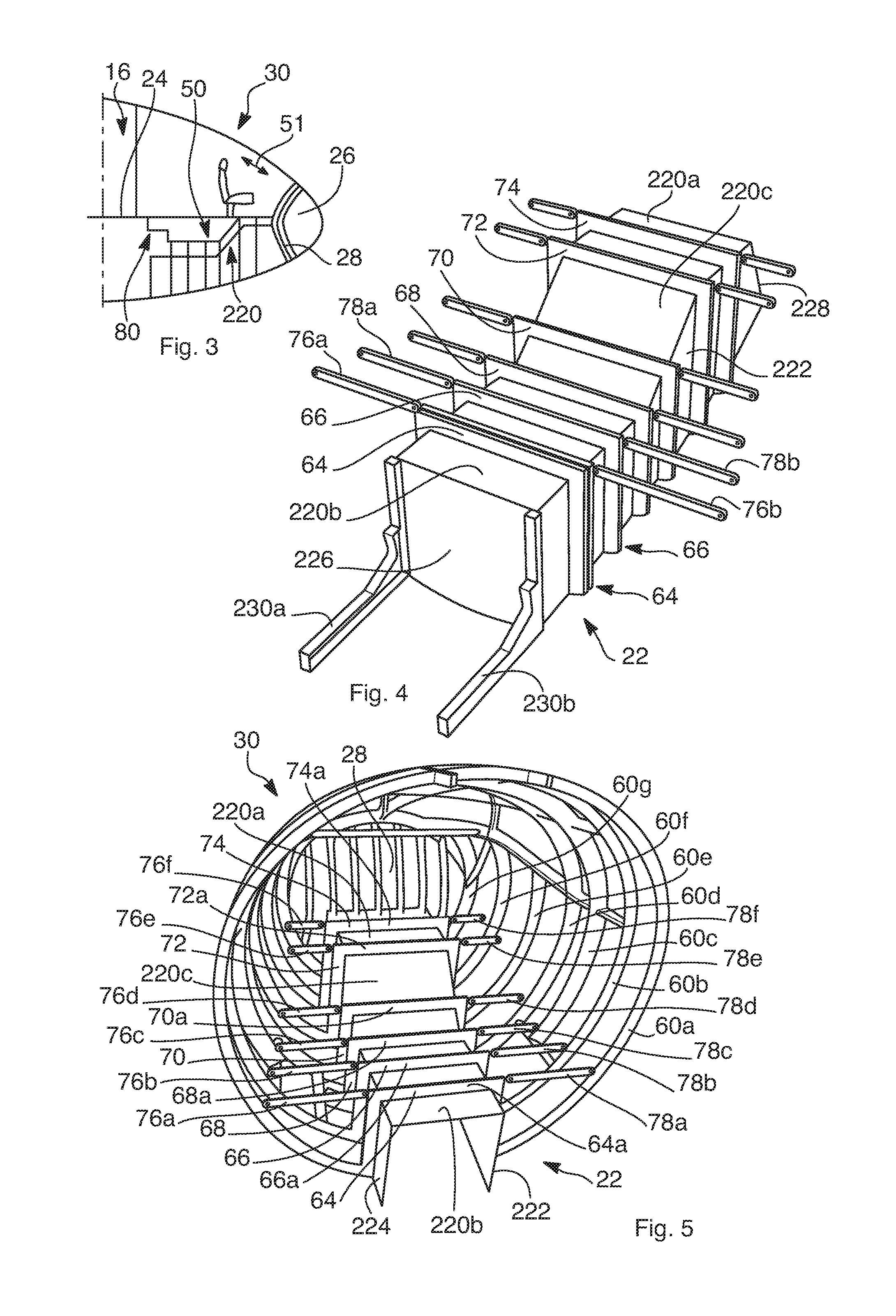Aircraft front portion having an improved landing gear bay
a technology for landing gear and aircraft, which is applied in the field of aircraft front portions, can solve the problems of difficult fitting, inconvenient working in these lateral spaces, and inconvenient installation of equipment in two lateral spaces
- Summary
- Abstract
- Description
- Claims
- Application Information
AI Technical Summary
Benefits of technology
Problems solved by technology
Method used
Image
Examples
Embodiment Construction
[0053]By way of example, and as shown in fragmentary longitudinal section in
[0054]FIG. 1, an aircraft given overall reference 10 includes two levels or zones, namely a top zone Z1 and a bottom zone Z2. The top zone Z1 has a cabin zone 12 dedicated to passengers and, towards the front of the aircraft, a front zone 14 dedicated to the cockpit. The front zone or cockpit 14 is separated from the cabin zone 12 by a passage 16 giving access to the cockpit. The bottom zone Z2 has a rear cargo zone 18 serving in particular to receive containers, and a front bottom zone 20 that is dedicated to integrating electronic equipment and systems (avionics bays, . . . ), and ventilation equipment and systems, and that also receives the nose landing gear housed in its landing gear bay 22. The cabin zone 12 and the access passage 16 are separated from the bottom zone Z2 by a floor 24.
[0055]At its front end, in front of the cockpit 14 and the front bottom zone 20, the aircraft has a radar equipment zone...
PUM
 Login to View More
Login to View More Abstract
Description
Claims
Application Information
 Login to View More
Login to View More - R&D
- Intellectual Property
- Life Sciences
- Materials
- Tech Scout
- Unparalleled Data Quality
- Higher Quality Content
- 60% Fewer Hallucinations
Browse by: Latest US Patents, China's latest patents, Technical Efficacy Thesaurus, Application Domain, Technology Topic, Popular Technical Reports.
© 2025 PatSnap. All rights reserved.Legal|Privacy policy|Modern Slavery Act Transparency Statement|Sitemap|About US| Contact US: help@patsnap.com



